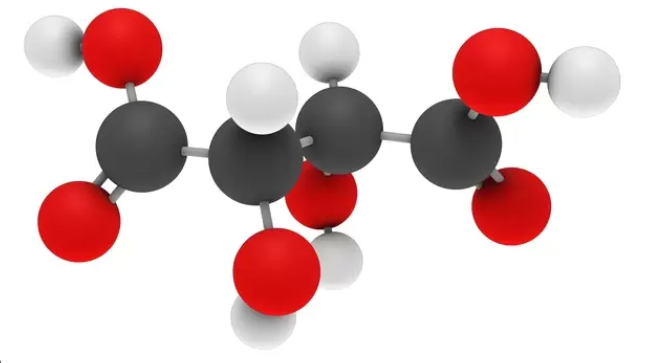
Tartaric acid, also called dihydroxybutanedioic acid, is a white crystalline organic acid that occurs naturally in many plants and one of the most widely distributed of plant acids, with a number of food and industrial uses. Tartaric acid is an kind of alpha-hydroxy-carboxylic acid, whch is diprotic and aldaric in acid characteristics and is a dihydroxyl derivative of succinic acid. Potassium bitartrate is the salt form of Tartaric acid, commonly known as cream of tartar and is developed naturally in the process of winemaking. There are three stereoisomeric forms of Tartaric acid exist, the first form is dextrorotatory Tartaric acid (d-Tartaric acid), which is found in grapes and several other fruits; the second form is levorotatory Tartaric acid (l-Tartaric acid), which can be obtained chiefly by resolution of racemic Tartaric acid; the third form is a meso or achiral, which is prepared commercially by the molybdenum- or tungsten-catalyzed oxidation of maleic anhydride with hydrogen peroxide.
Scientists at Creative Proteomics utilize a highly quantitative method with high-performance liquid chromatography (HPLC) for the determination of Tartaric Acid levels in various samples, including Food, Plant and more. High-Performance Liquid Chromatography (HPLC) using a differential refractive index detector (RID) for the determination of Tartaric acid levels in a lot of biological samples. This Methodology provides accurate, reliable, and reproducible results of Tartaric acid measurement, which enables us to analyze of Tartaric acid levels in vitro and in vivo.
Tartaric acid and its derivatives have used widely in the field of pharmaceuticals. For example, Tartaric acid in combination with citric acid has been used in the production of effervescent salts in order to improve the taste of oral medications. Tartaric acid also has several applications in the field of industrial production. For example, Tartaric acid has used in the farming and metal industries as a chelating agent for complexing micronutrients in soil fertilizer and for cleaning metal surfaces consisting of aluminium, copper, iron, and alloys of these metals, respectively due to the ability to chelate metal ions such as calcium and magnesium.
The Russian-Polish botanist M. Tswett is generally recognized as the first person to establish the principles of chromatography. In a paper he presented in 1906, Tswett described how he filled a glass tube with chalk powder (CaCO3) and, by allowing an ether solution of chlorophyll to flow through the chalk, separated the chlorophyll into layers of different colors. He called this technique “chromatography”. Fundamentally, chromatography is a technique used to separate the components contained in a sample. High Performance Liquid Chromatography (HPLC) is a method able to separate non-volatile, thermally unstable, and polar components separate or in a mixture. HPLC is a type of chromatography that, because of its wide application range and quantitative accuracy, is regarded as an indispensable analytical technique, particularly in the field of organic chemistry. It is also widely used as a preparation technique for the isolation and purification of target components contained in mixtures.
Tartaric acid Analysis Service at Creative Proteomics supports your research in Tartaric acid Analysis. HPLC Based Analysis Service Platform enable us at Creative Proteomics offers you a state-of-the-art Analysis Service.
Sample Type
Food, Plant and more
Method
High-Performance Liquid Chromatography (HPLC) using a differential refractive index detector (RID) for the determination of Tartaric acid levels in a lot of biological samples. This Methodology provides accurate, reliable, and reproducible results of Tartaric acid measurement, which enables us to analyze of Tartaric acid levels in vitro and in vivo.
Send us your samples, you will get all information that you need!







